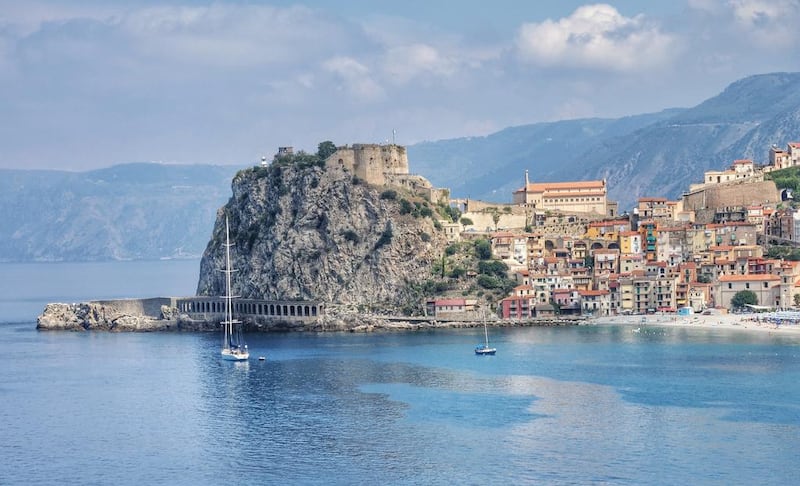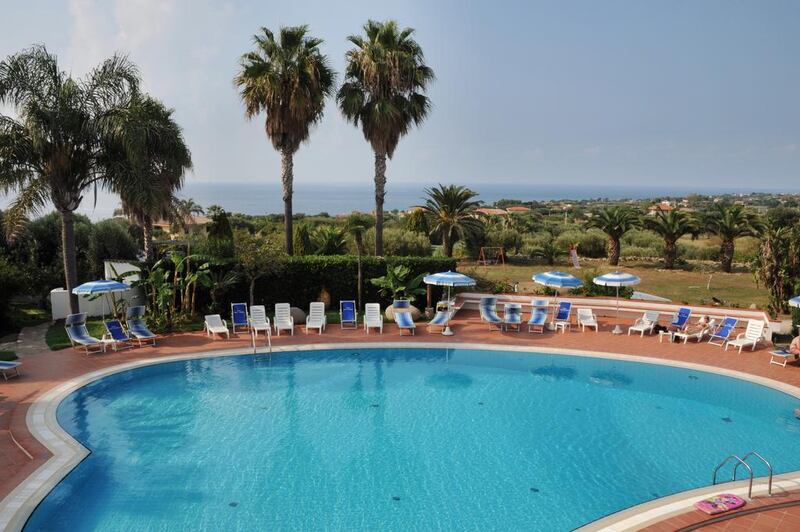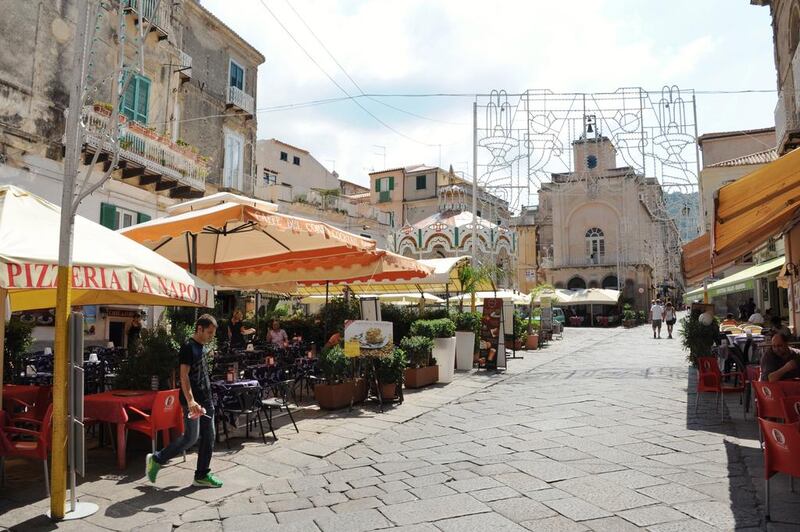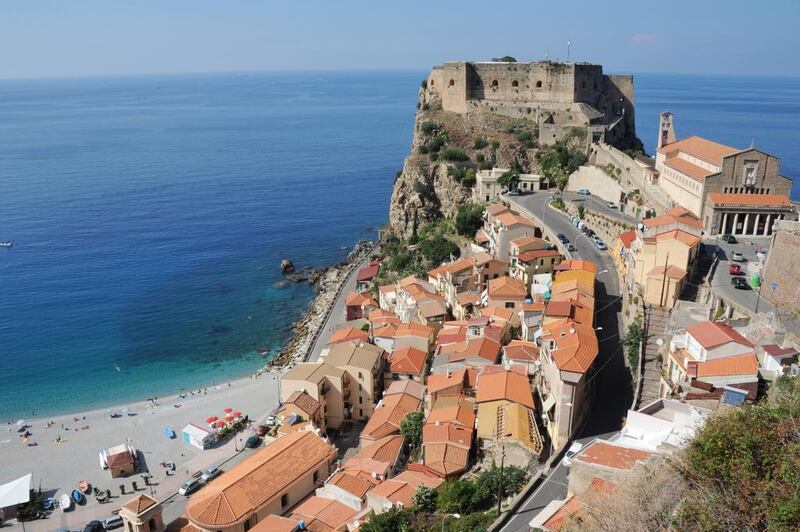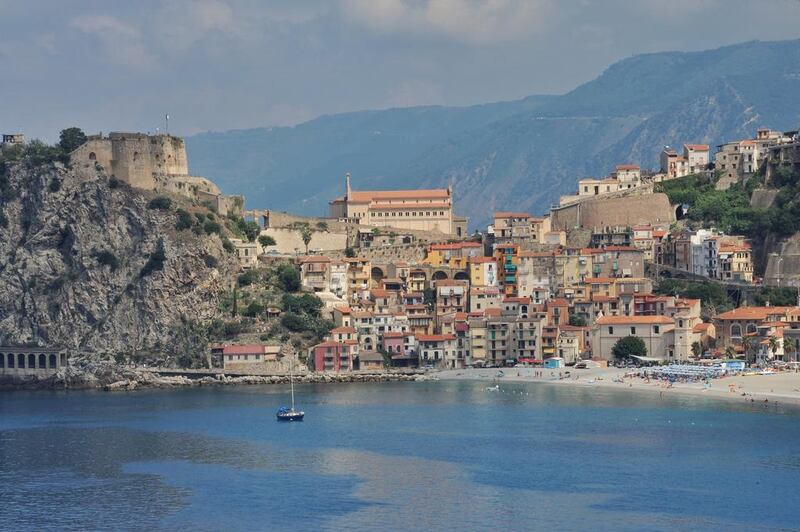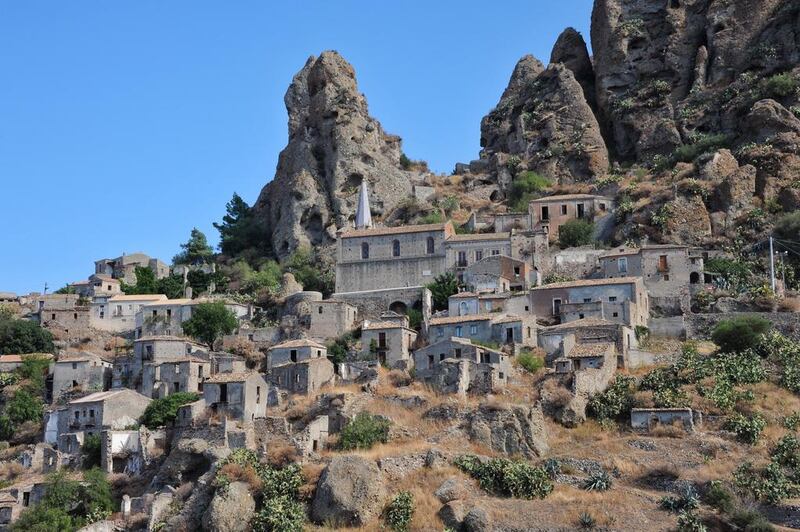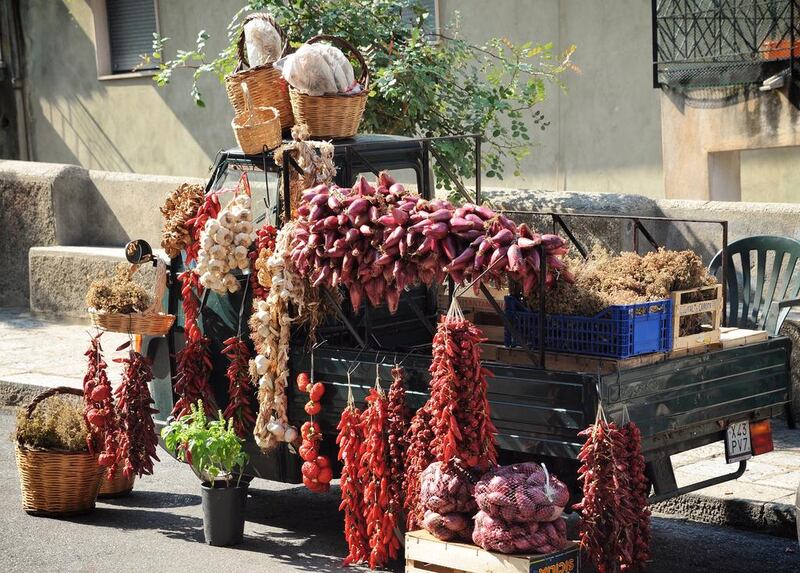Calabria is Italy's long, rangy toe that sticks out from Puglia's heel, via Basilicata's instep, and nudges towards Sicily. It has been stepped on and bruised more times than it can remember in its long, turbulent history – impoverished, ransacked, exploited and mismanaged from ancient times onwards.
Yet along its 700 kilometres or so of rocky coastline are some of Italy’s most beautiful and tranquil beaches. Its mountainous interior – which makes up 90 per cent of the region – is rich in forests, hilltop villages and kilometre after kilometre of olive groves. It’s rough, not quite ready and very rustic. It’s how I like Italy.
Driving along the Tyrrhenian coastal road from Lamezia airport, I get glimpses of two of Calabria’s prettiest towns, Pizzo and Tropea. But first I head to Capo Vaticano, which hugs the edge of a rugged cape.
The whitewashed, terracotta-topped Costa Azzurra hotel is a 15-minute walk from a string of beaches indenting the coast. My room is very basic, but I have banana trees outside my door and views of the sea in front of me. As evening approaches, I hear the sound of a goat bleating. Could it get more bucolic?
I discover later that the goat belongs to a little street fair that has sprung up down the road from the hotel. Stallholders sell local produce (not the goat, though), while music fills the air. It’s only when karaoke starts that I slip away for a walk down to Capo Vaticano’s lighthouse, from where I can the lights of Sicily across the sea.
I get within touching distance of Sicily the next morning as I head to Calabria’s southernmost tip. There’s a curious ghost village, Pentedattilo, which is up a twisting mountain road. Stone houses, most of them abandoned, tumble down the scrubby hillside in the shadow of spiky granite peaks. There are a few signs of life, however, mainly from several artists’ studios and a little cafe.
Carmelo, who runs a craft shop, tells me that there’s only one permanent resident, a woman in her 80s, but people are slowly buying the crumbling houses to do them up as second homes. In August, Carmelo says, as many as 3,000 people wedge into Pentedattilo’s stony narrow lanes to watch summertime concerts in a new amphitheatre just below the village.
Leaving the peace of the barren mountains, I head back along the coast and plunge into the chaos of Reggio Calabria, the region's biggest city. I can't have come all this way without seeing two of Calabria's biggest draws, namely the Riace bronzes, which are housed in the National Archaeological museum. These giant bronze statues of Greek warriors date from the seventh century, and were found in the Ionian Sea in 1972, in surprisingly good condition. They're quite extraordinary, but the museum could do with a few more exhibits.
A few minutes’ walk from the museum is the Lungomare, a long seafront promenade that runs along the gravelly beach.
The coast road takes me back to Capo Vaticano, via Scilla, where pastel houses embellish a long expanse of beach. The serene setting is a far cry from its grisly place in Greek mythology, as Scylla – its name in ancient times – is where six of Odysseus's crew met an unfortunate end at the hands of a monster in Homer's Odyssey. The only monsters you will find nowadays are the jellyfish that occasionally plague the coast.
The following morning, I claim my sunlounger at one of Capo Vaticano’s beaches. It’s lively without being too busy, with great people-watching thrown in. The sea is clear, warm, inviting. I could have bagged a more peaceful spot two beaches away, where you have to clamber over rocks and wade into the sea to reach the empty sands. Or I could just hand over €10 (Dh42) for a couple of sunloungers and an umbrella. Like the more fortunate members of Odysseus’s crew, I’m turning into a lotus-eater – and not going anywhere.
Lunch wrenches me away from the beach, towards the compelling loveliness of Tropea. It’s probably the chicest town in otherwise un-chic Calabria, part of which hangs over a cliff, its houses seemingly melting into the rock face. The beaches lie in the shadow of the cliffs, divided by a promontory that’s the towering home of the church of Santa Maria dell’Isola. Later, it’s a cooling spot for a stroll among prickly pears and olive groves, but first there’s a spicy lunch to devour on the tree-shaded terrace of Quei Bravi Ragazzi. I’m getting a crash course in Calabrian cuisine, which revolves chiefly around chilli. Peperoncini – long, thin, red chillies – are found in many dishes, but its heat doesn’t blow your head off.
My next destination is an isolated agriturismo halfway between the Tyrrhenian and Ionian coasts, 23 kilometres east of Lamezia airport. But first, I take a quick detour into Pizzo. Amid the cafes in Piazza della Repubblica I find Bar Gelateria Ercole. Apparently, it’s the place to taste Pizzo’s contribution to Calabrian food: tartufo. It’s like an oversized chocolate truffle, but made with ice cream. The pistachio version I try is fabulous.
It’s a prelude for an evening of exquisite food, thanks to the Gaetano family, owners of Le Carolee agriturismo. This is the sort of farm hotel that Italophiles dream of finding: a comfortable 18th-century house surrounded by olive groves and orchards of fig, pomegranate and lemon trees, plus the most important ingredient of friendly, warm-hearted owners who cook great local cuisine using a lot of their own produce. Slow-cooked veal tastes even better while sitting in the quiet garden overlooking a deep green valley.
From Le Carolee, I can explore some of the other beaches along both coasts during the next few days. Caminia on the Ionian Sea is a small beach of crushed gravel under the cliffs of the Pietra Grande. There are very few sunloungers to be found, but I don’t mind pitching my towel under a little bamboo shelter. It’s 28°C and the sea is like a bath. Hardly anyone is about. It’s bliss.
Eight kilometres down the coast at the much larger beach at Soverato, families frolic among brightly painted fishing boats. I find a similar buzzing vibe the following day at Diamante, farther north on the Tyrrhenian coast. It’s a two-hour drive from Le Carolee, but I have the good fortune to be in Calabria during the annual chilli festival in Diamante, which this year runs from September 9 to 13.
Most of the events take place in the evening, but even in the afternoon there are dozens of stalls along Diamante’s seafront, selling tempting produce from Calabria, Campania and Sicily. Around the corner, I find the little Come Una Volta gelateria. Its owner has concocted a special chilli chocolate ice cream. At first I’m fooled by the smoothness of the chocolate and cream – until the chilli makes its presence felt.
The drive back takes me along the rugged coast road that reveals the seaboard’s variety. On the map, it looks uniform, but in reality it’s a constantly changing landscape of outcrops, rocky beaches and sandy stretches broken up by resorts in assorted stages of scruffiness. On the land side, craggy mountains shelter ruined forts and castles. I stop at Amantea. Its 1.6km-long beach of soft sand is practically deserted.
Quite a few Italians are at Le Carolee, where Sunday lunch attracts locals from miles around and goes on for hours. As the lunch guests finally leave at 7pm, the haze in the distance clears. For the first time, I can see the Tyrrhenian Sea and even Stromboli’s constantly smouldering volcano from my bedroom window. A final surprise from a captivating region that is full of them.
If you go
The flight: Return flights with Etihad from Abu Dhabi to Rome cost from Dh3,405, including taxes. The flight time is about six hours and 20 minutes. Return flights from Rome to Lamezia with Ryanair cost from €58 (Dh242). The flight time is about one hour and 15 minutes.
The hotels: Long Travel offers a week at Costa Azzurra from £315 (Dh1,694) per person, and at Le Carolee (listed as "Il Casale") from £399 (Dh2,146) per person, half-board, excluding flights.
travel@thenational.ae
